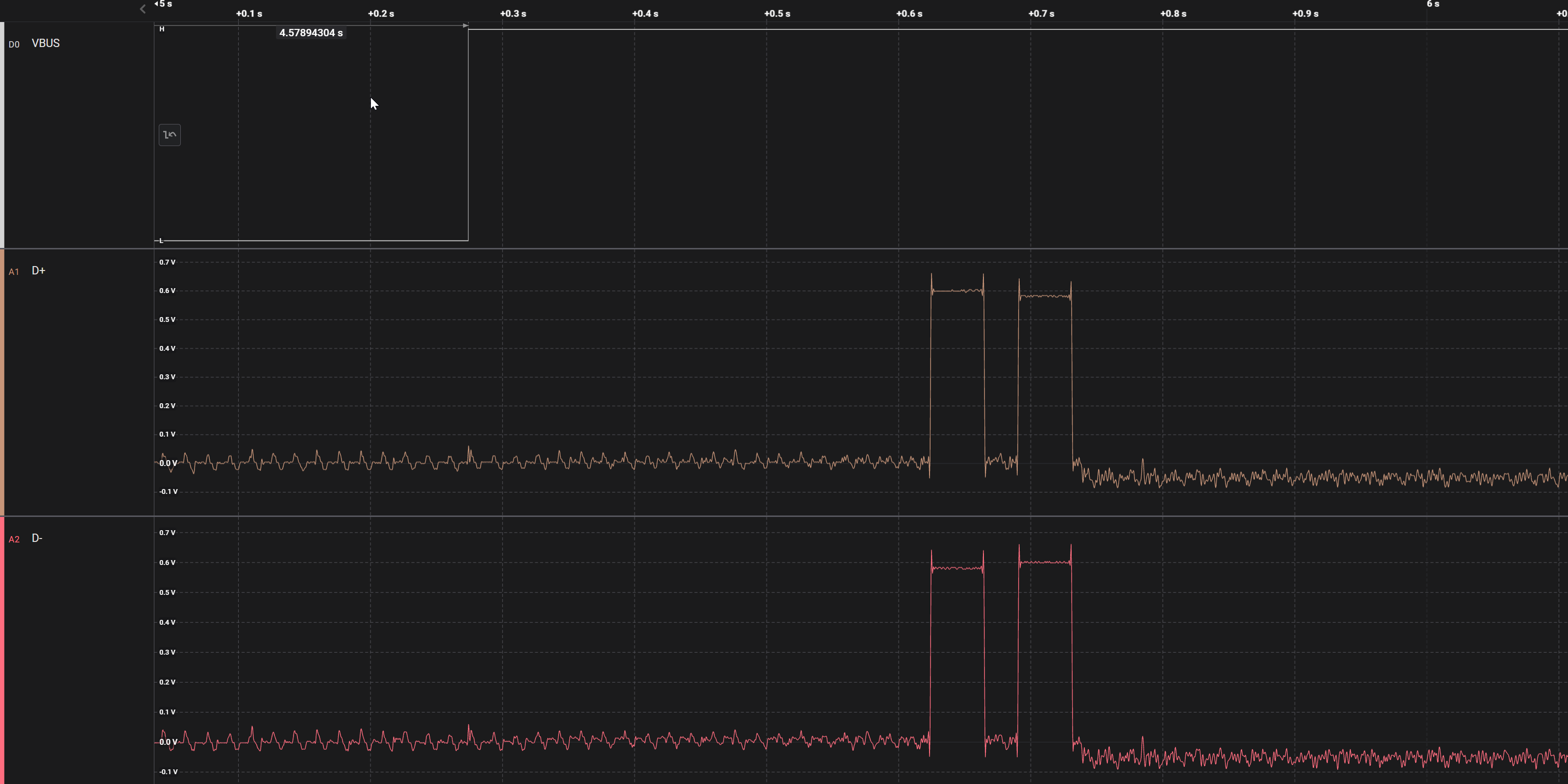SLVSH93A October 2023 – March 2024 TPS25751
PRODUCTION DATA
- 1
- 1 Features
- 2 Applications
- 3 Description
- 4 Device Comparison Table
- 5 Pin Configuration and Functions
-
6 Specifications
- 6.1 Absolute Maximum Ratings
- 6.2 ESD Ratings
- 6.3 Recommended Operating Conditions
- 6.4 Recommended Capacitance
- 6.5 Thermal Information
- 6.6 Power Supply Characteristics
- 6.7 Power Consumption
- 6.8 PP_5V Power Switch Characteristics
- 6.9 PPHV Power Switch Characteristics - TPS25751D
- 6.10 PP_EXT Power Switch Characteristics - TPS25751S
- 6.11 Power Path Supervisory
- 6.12 CC Cable Detection Parameters
- 6.13 CC VCONN Parameters
- 6.14 CC PHY Parameters
- 6.15 Thermal Shutdown Characteristics
- 6.16 ADC Characteristics
- 6.17 Input/Output (I/O) Characteristics
- 6.18 BC1.2 Characteristics
- 6.19 I2C Requirements and Characteristics
- 6.20 Typical Characteristics
- 7 Parameter Measurement Information
-
8 Detailed Description
- 8.1 Overview
- 8.2 Functional Block Diagram
- 8.3
Feature Description
- 8.3.1 USB-PD Physical Layer
- 8.3.2 Power Management
- 8.3.3 Power Paths
- 8.3.4 Cable Plug and Orientation Detection
- 8.3.5 Overvoltage Protection (CC1, CC2)
- 8.3.6 Default Behavior Configuration (ADCIN1, ADCIN2)
- 8.3.7 ADC
- 8.3.8 BC 1.2 (USB_P, USB_N)
- 8.3.9 Digital Interfaces
- 8.3.10 Digital Core
- 8.3.11 I2C Interface
- 8.4 Device Functional Modes
- 8.5 Thermal Shutdown
-
9 Application and Implementation
- 9.1 Application Information
- 9.2 Typical Application
- 9.3 Power Supply Recommendations
- 9.4
Layout
- 9.4.1 TPS25751D - Layout
- 9.4.2 TPS25751S - Layout
- 10Device and Documentation Support
- 11Revision History
- 12Mechanical, Packaging, and Orderable Information
Package Options
Mechanical Data (Package|Pins)
Thermal pad, mechanical data (Package|Pins)
- RSM|32
Orderable Information
9.2.3.3 BC1.2 Application Curves
The plots below show the BC1.2 advertisement and detection with the TPS25751.
 Figure 9-19 BC1.2 DCP Advertisement
Figure 9-19 BC1.2 DCP Advertisement
 Figure 9-20 BC1.2 CDP Advertisement
Figure 9-20 BC1.2 CDP Advertisement
 Figure 9-21 BC1.2 DCP Detection
Figure 9-21 BC1.2 DCP Detection
 Figure 9-22 BC1.2 CDP Detection
Figure 9-22 BC1.2 CDP Detection